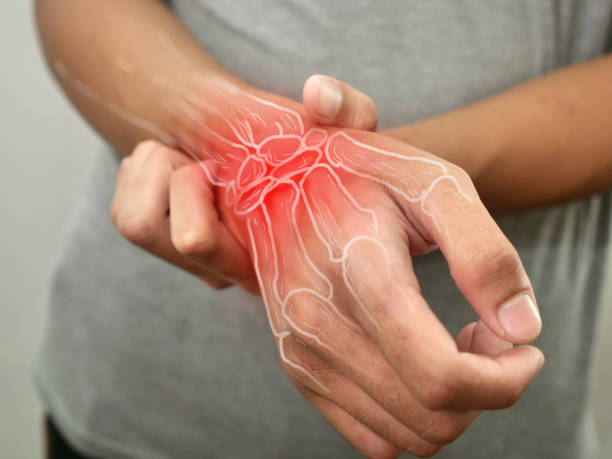Podiatrists are experts in the biomechanics of the lower leg and foot. They can identify whether your feet and ankles are contributing to your back pain through a biomechanical assessment.
For example, if your lower back pain is related to flat feet or a leg length discrepancy, our podiatrists can provide custom orthotics that will correct this and relieve your back pain.

1. Pain Relief
In addition to treating common podiatric conditions like bunions, ingrown toenails, and heel pain, podiatrists are also able to help you with back problems. The connection between your feet and back might not be obvious at first glance, but the two are closely connected. When something goes wrong with the feet, ankles, or lower back, it can throw the entire weight-bearing structure of your body out of alignment and cause pain.
If you have back pain, a podiatrist can help relieve it by using a variety of treatments, including custom orthotics, shockwave therapy, and therapeutic foot massages. They can also provide advice on proper footwear and lifestyle changes to prevent further pain. Podiatrists can also use biomechanical assessments to determine if you have pronation (an internal rotation of the lower limb that causes increased curvature of the spine), which may be contributing to your back pain.
When you have back pain, it’s important to see a podiatrist right away. They’ll be able to help you get the relief you need, so you can return to your normal routine. Plus, it’s always a good idea to see a podiatrist regularly to keep your feet healthy and free from pain. They’ll be able to catch issues before they become more serious and treat them accordingly. This can help prevent future back pain, and improve your overall quality of life.
2. Reduced Stress
Foot problems such as flat feet and high arches can lead to overpronation (abnormal rolling inward of the foot with each step) or supination (outward motion of the foot with each step). These foot issues can alter a person’s normal walking pattern, leading to uneven weight distribution and excessive stress on the feet and lower legs. This stress can then travel up the body to cause back pain.
Seeing an experienced podiatrist is one of the best ways to prevent back pain from getting worse. If left untreated, back pain can begin to affect a person’s daily life activities. This can include avoiding physical activity, not being able to sleep comfortably and having a negative impact on one’s mental health.
A podiatrist can assess your condition and develop a comprehensive treatment plan to help you feel like yourself again. This may include a combination of treatments, including orthoses, shockwave therapy and/or manual manipulation of the foot and ankle.
Podiatrists are tertiary-qualified doctors who have dedicated years of study to the foot, ankle and lower leg. They work closely with orthopedic specialists, physiotherapists and sports trainers to ensure proper coordination of care and a holistic approach to injury rehabilitation and prevention. This team approach allows patients to receive the best care possible. A podiatrist can also provide education on lifestyle, footwear and exercise to improve overall health and wellbeing.

3. Increased Mobility
Our back and legs have to work together in balance to move us through life. If any one of them is not functioning properly, then the others have to compensate which causes pain, discomfort and even injuries like herniated discs that can have a dramatic impact on the quality of your life. Podiatrists are able to offer long term solutions to these problems.
They can use tools to trim or remove hard skin around the feet, split ingrown toenails and corns and also use cryotherapy equipment to freeze off warts. They can also help with lower leg injuries such as Achilles tendinitis, which affects people who run or play sports like tennis that require frequent stops and changes of direction or who wear high heels for prolonged periods.
The podiatrists at Midland Podiatry are highly trained professionals. They’ve gone through years of rigorous training in foot and ankle care at podiatric medical schools and hospital residencies. This makes them uniquely qualified to diagnose and treat any problems you might have with your feet, ankles, and even your lower legs. They can often be the first to spot signs of underlying medical conditions that affect your feet and legs, and these conditions can even impact your entire body, including your back. For their professional podiatry care you can check out their website: https://www.midlandpodiatry.com.au/podiatrist-high-wycombe/
They can also prescribe custom orthotics to help support your arches, align your feet and alleviate pain in your knees, hips and lower back. They can also help with other health concerns such as diabetes, which may cause reduced circulation to the feet and lower legs causing numbness and tingling, or arthritis which can lead to swelling and stiffness in the joints.











